We had a great visit with Michael Hunt and Naomi Dalglish of Bandana Pottery here at our studio. Lots of talk about clay, slip, firing and all the nuances that make our hearts go pitter-patter. They gave an image talk and exhibited some of their work and Michael did a short demonstration of making a Korean onggi style jar.
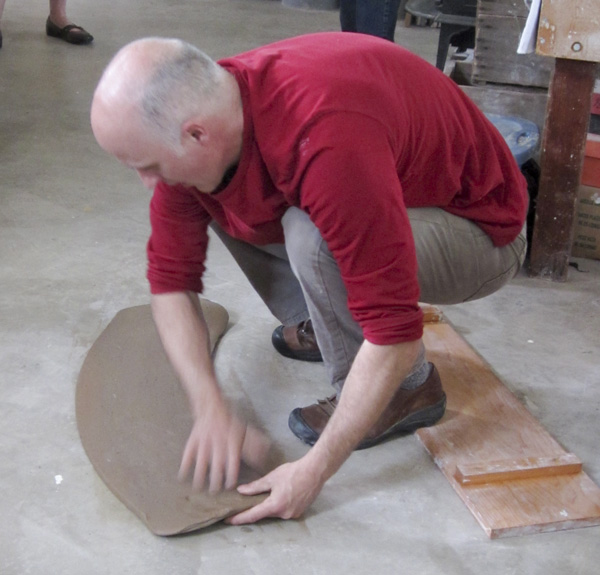 Michael learned to make onggi style jars in Cholla Province in South Korea. Michael starts his jar by forming long slabs that are flung on a concrete floor.
Michael learned to make onggi style jars in Cholla Province in South Korea. Michael starts his jar by forming long slabs that are flung on a concrete floor.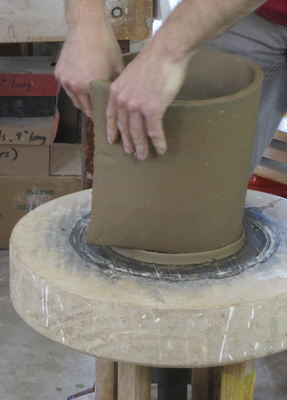 The slab is turned on edge on a base on the kick wheel.The pot is then shaped and stretched using an anvil and paddle while the kick wheel spins. Very little water is used to retain the strength of the clay so the jars could be made quickly with great strength.
The slab is turned on edge on a base on the kick wheel.The pot is then shaped and stretched using an anvil and paddle while the kick wheel spins. Very little water is used to retain the strength of the clay so the jars could be made quickly with great strength.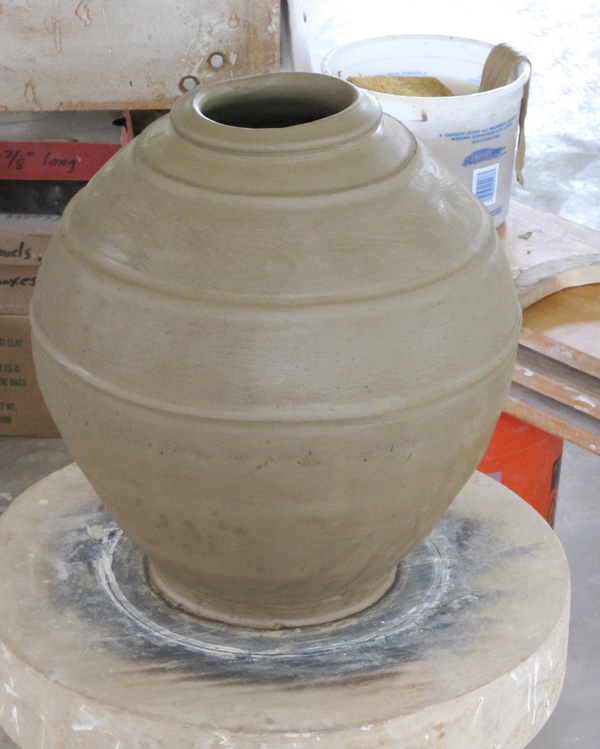 When the jar was completed one of the visitors asked Michael how he views his pot. There was a great discussion about the view from the potters wheel versus the perspective view of the user. I personally love the moment when I take a step back and understand a minor shift in form that seems to help the jar take in a deep breath.
When the jar was completed one of the visitors asked Michael how he views his pot. There was a great discussion about the view from the potters wheel versus the perspective view of the user. I personally love the moment when I take a step back and understand a minor shift in form that seems to help the jar take in a deep breath.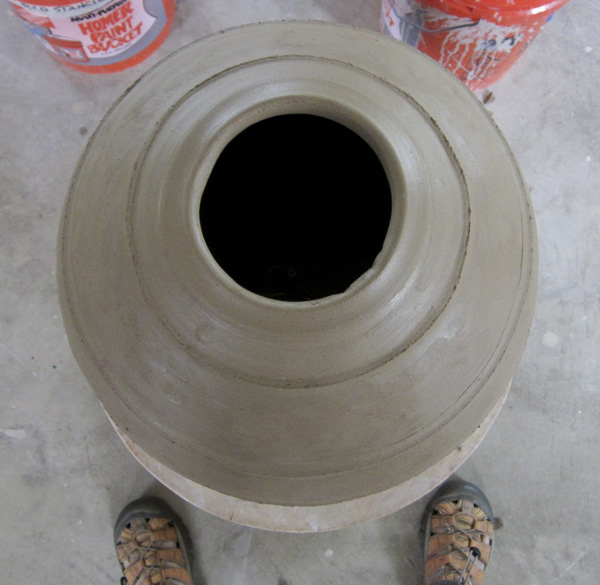 This week I helped Warren pack up two of his large storage jars so we could deliver them to Douglas Dawson Gallery in New York City for the Spring Arts & Antiques show at the Armory.
This week I helped Warren pack up two of his large storage jars so we could deliver them to Douglas Dawson Gallery in New York City for the Spring Arts & Antiques show at the Armory.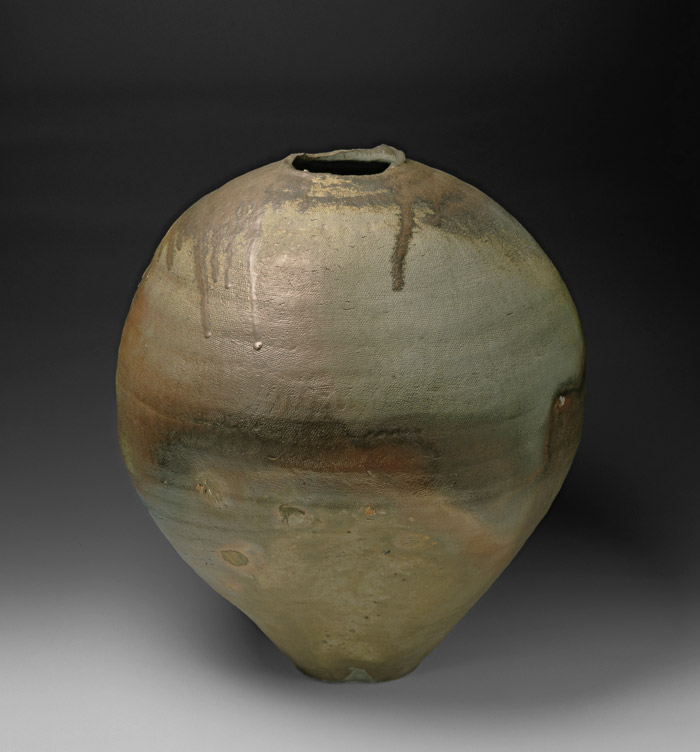 I have mused on the question of how we view jars. I have seen them in the dusty natural light of our studio. I have helped to load them in the back of our Toyota like two corrugated mummies and then have seen them in the clear light of a gallery setting.
I have mused on the question of how we view jars. I have seen them in the dusty natural light of our studio. I have helped to load them in the back of our Toyota like two corrugated mummies and then have seen them in the clear light of a gallery setting.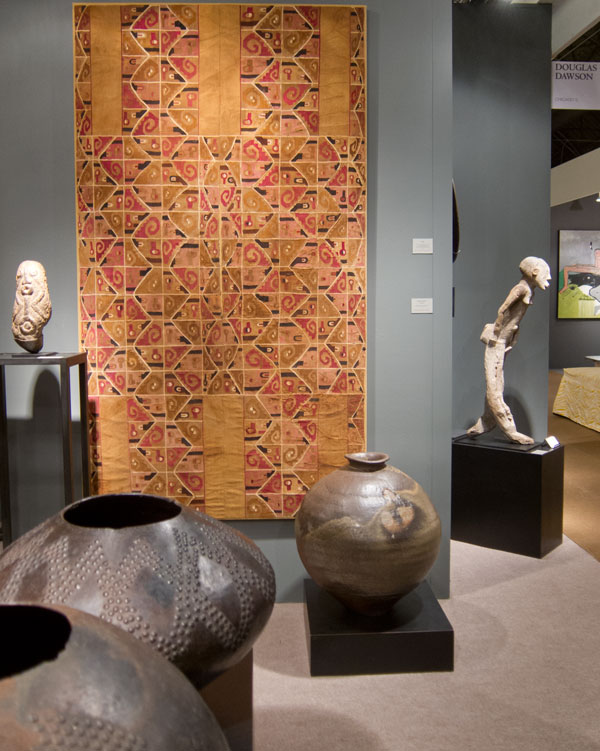 I am reminded of how I love to see pots in multiple views. When I first saw neolithic Chinese Jars from a bird's eye view I felt like I had a whole new understanding of use, form and decoration. A vantage point that was akin to how the potters must have felt as they formed and decorated their jars.
I am reminded of how I love to see pots in multiple views. When I first saw neolithic Chinese Jars from a bird's eye view I felt like I had a whole new understanding of use, form and decoration. A vantage point that was akin to how the potters must have felt as they formed and decorated their jars.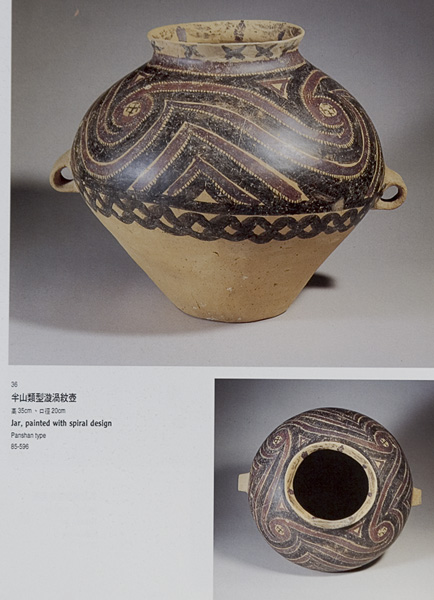
It was amazing watching Michael give birth to that big belly onggi jar. Changing subject to Warren's large jars. They look spectacular from any which view. Top, bottom, dusty or clear. The interesting surface does not just happen. It is created. Isn't it?
In addition to the earlier order of one rice ball and one rectangular plate, how about a large jar to make it a unit of three? They can keep the kimchi.
The last image in the series above looks very similar to a jar in the Freer that I handled many times...! It's almost like old times again! I enjoy seeing your blogs, and hope you keep them coming. M